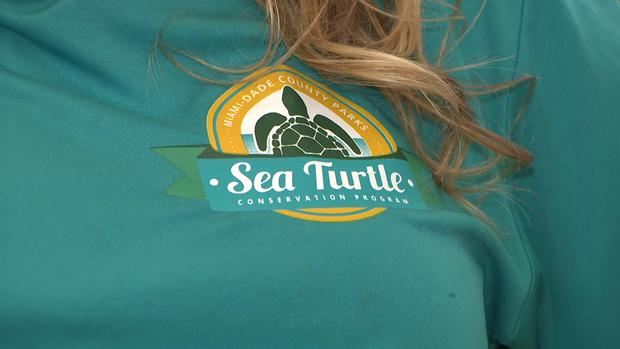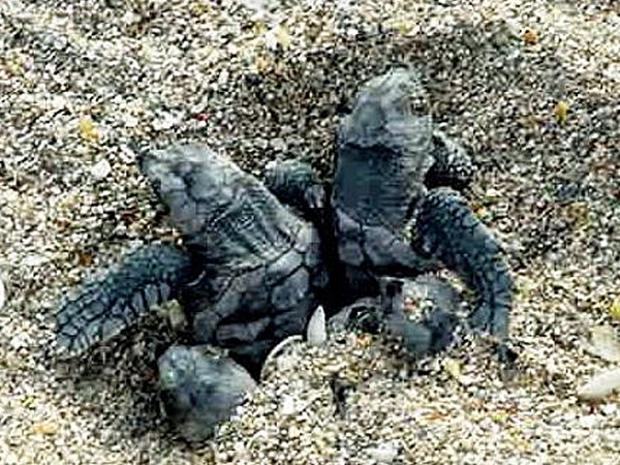Miami-Dade Parks Work To Save Endangered Sea Turtles With Conservation Program
MIAMI (CBSMiami) -- A loggerhead turtle shuffles back to the ocean, having successfully completed the journey to lay her eggs.
Teal Kawana is the Project Manager for the Miami-Dade Parks Sea Turtle Conservation, a program in partnership with the Florida Fish and Wildlife Conservation Commission.
Kawana explains how her team combs the beach each day for new sea turtle activity along the entire stretch of Miami-Dade County's beaches.
"Right as the sun is coming up, the shadow from the sunrise helps us see the tracks better, there's less people on the beach less foot traffic and less chance of anyone running over it before we get there," Kawana says. "We survey from Golden Beach the whole way down to Key Biscayne and when we do come upon one, we mark it off with signage on each for no one to disturb it."
Sea turtle nesting season runs from May 1 to October 31 when five types of sea turtles lay their eggs in the sand. These graceful creatures are an endangered species.
Along with federal and state agencies, Miami-Dade Parks and Recreation heads this mission to protect them.
"We get approximately 600 nests per year, and I am expecting this to be a high year. We might get more than that, which would be awesome because it would be record breaking," explains Kawana.
Sea Turtles travel thousands of miles in their lifespan and lay eggs on the same beaches they hatched from. All season the team meticulously records data, for each new nest or visit. Sometimes the turtle does not lay eggs, which is called a false crawl. Each visit encountered is recorded. These false crawls occur 50 percent of the time and can occur for different reasons including the type of sand and the lighting.
"Many ocean front properties have adapted 'turtle friendly' lighting, helping the hatchlings make it out to sea. It is instinctive for them to go towards artificial light. On a dark beach they would be travelling in the reflection of the night sky over the ocean, but when we see artificial lighting from condos or businesses or the street, they will head the wrong direction," she explains.
Sea turtle populations dwindled due to harvesting them for food, and their shells, and face threats today from loss of their feeding and nesting grounds as well as people. People can help.
"The number one thing when you visit the beach, take your trash with you. Pollution is a problem for sea turtles and anything in our marine environment is going to be affected."
The work they have done is promising, with increased numbers of nests this year. This is Kawana's 12th season in the job she dreamed of after first meeting sea turtles in the Galapagos Islands.
"When you start working with them and you see all the help that they really need if you can aid in that its extremely rewarding. I have a special place in my heart for the juvenile green turtles, its rewarding to see one of your turtles rehabilitated and released into the ocean," she says.
Public awareness is a year round aspect of this job, if you would like to learn more about this program, even participate in a hatchling release you can visit the Miami-Dade Parks website or the FWC website.






